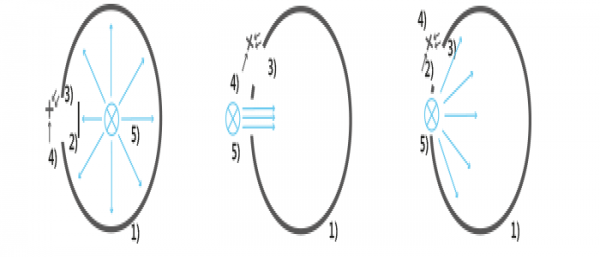Design criteria for the construction of integrating sphere detectors (ISD)
The measurement of luminous flux (lumens) or radiant flux (W) of lamps and luminaires is one of the main applications of integrating spheres. The multiple diffuse reflections ensure that light entering the sphere or light produced within the sphere illuminates the surface of the sphere evenly. The illumination intensity measured at an opening in the sphere is proportional to the total light power within the sphere. Depending on the emission characteristics of the test light source, there are various design criteria for construction.
Typical integrating sphere configurations for measuring light output
 | Sources that emit light in all directions (4 are measured inside integrating spheres with the test lamp positioned by means of a suitable lamp holder in the center of the sphere. A baffle must be positioned between the test light and the detector to prevent direct illumination of the detector by the test lamp. The detector must incorporate a cosine diffuser to ensure that the whole spherical surface is within the detector’s field of view. An auxiliary lamp is used to compensate for the self-absorption effects caused by the test light. |
 | For the measurement of directional sources such as reflector lamps, fiber optic sources and lasers, integrating spheres require suitable entrance ports through which the radiation from the external source enters the integrating sphere. A baffle between the entrance port and detector is not required, since it is not directly illuminated. The detector must be fitted with a diffuser. |
 | For applications with lamps and luminaires with wide viewing angles, such as LEDs, the detector must be shaded from the sample aperture with a baffle. Also in this configuration, a diffusing screen must be provided in front of the detector. |
 4Pi
4Pi
lamp -- directed lamp -- 2 Pi lamp
1. Integrating Sphere 2. Baffle 3. Diffuser 4. Detector 5. Test light
